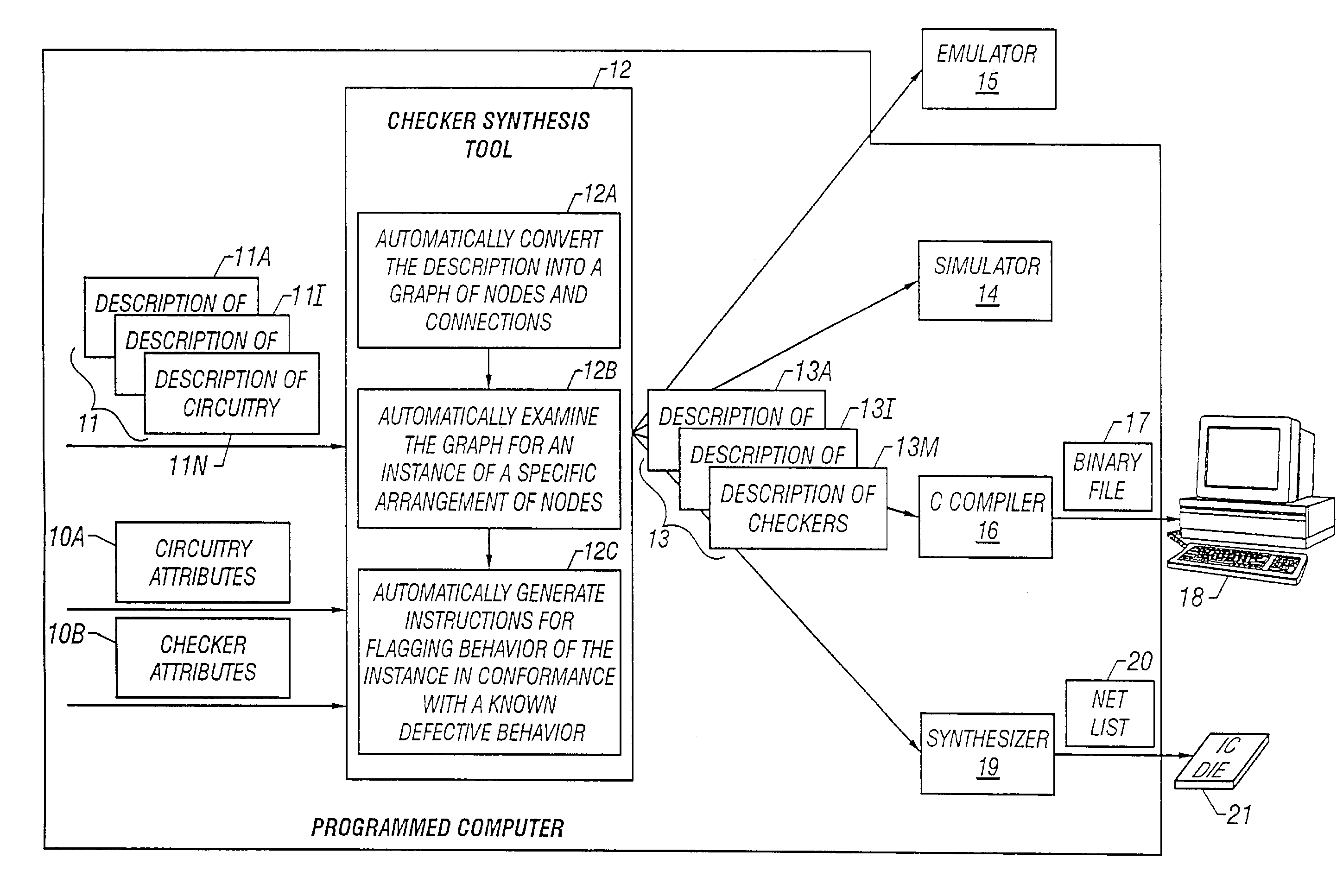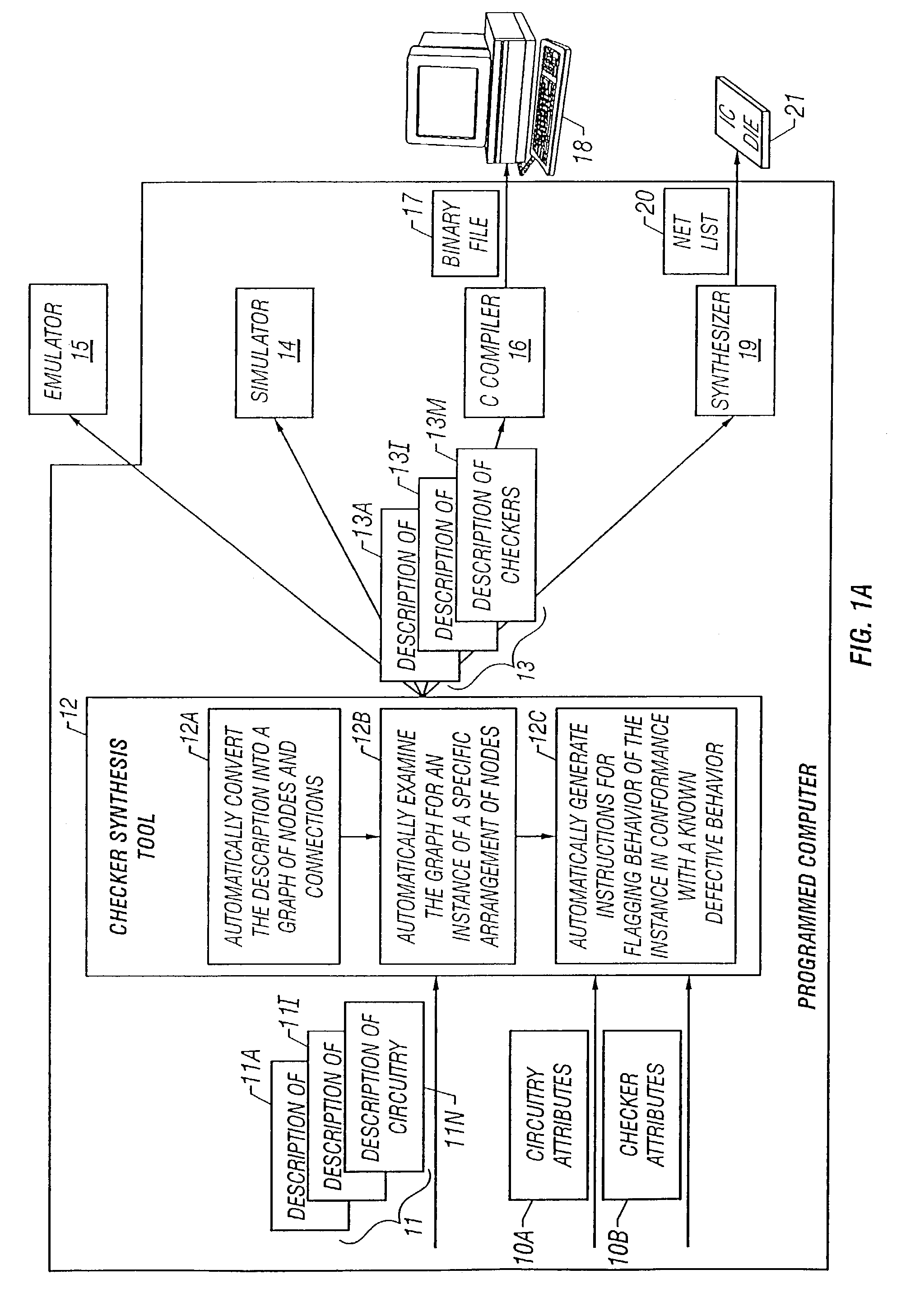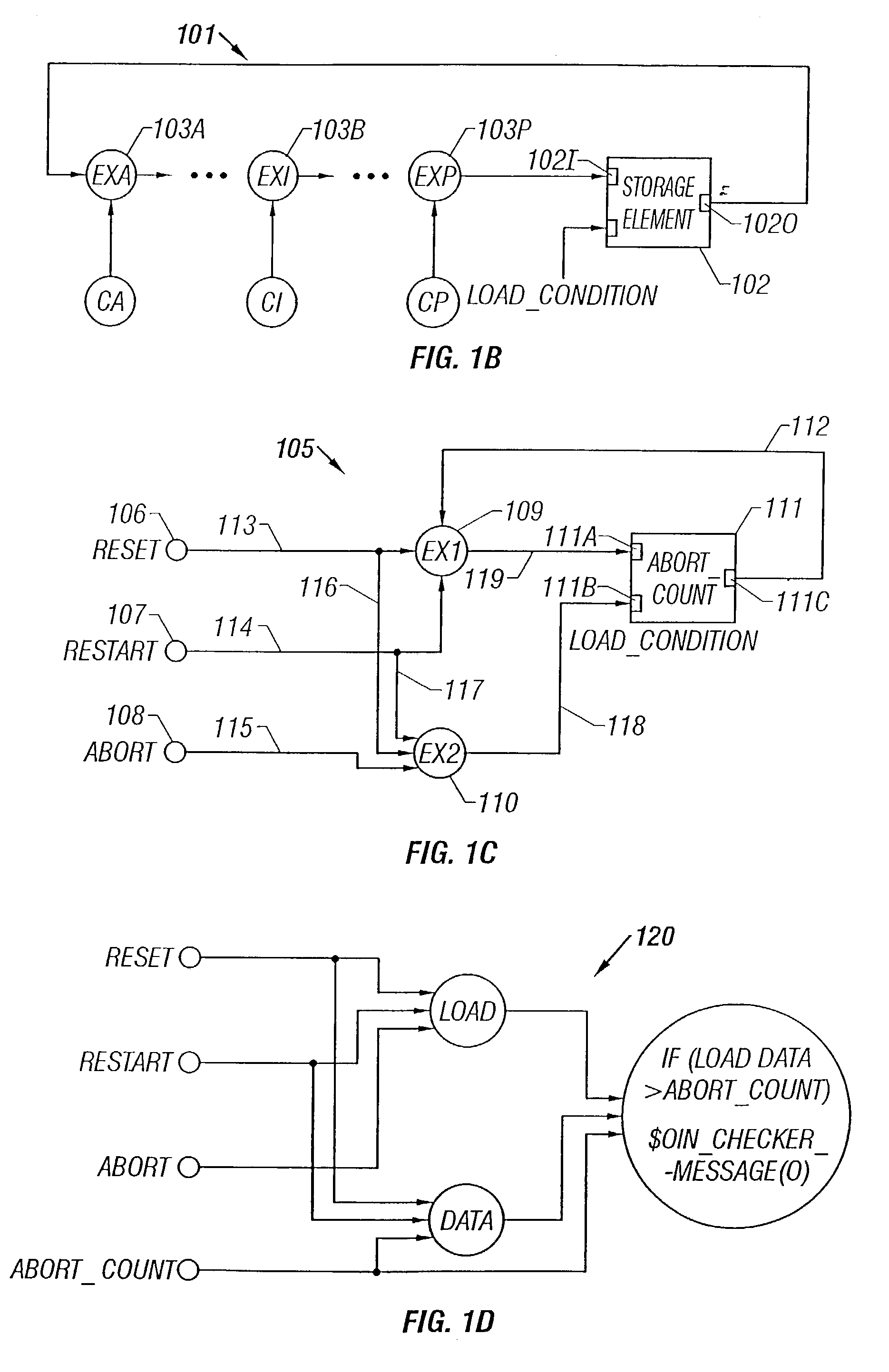Method for automatically generating checkers for finding functional defects in a description of circuit
a digital circuit and automatic generation technology, applied in the field of automatic generation of checkers for finding defects in a description of a digital circuit, can solve the problems of generating error messages, checking errors, and requiring substantial validation effort in modern high-performance microprocessors, and avoiding the generation and diagnosis of additional error messages. , to achieve the effect of eliminating the generation and diagnosis of additional error messages
- Summary
- Abstract
- Description
- Claims
- Application Information
AI Technical Summary
Benefits of technology
Problems solved by technology
Method used
Image
Examples
Embodiment Construction
[0059]According to the principles of this invention, a programmed computer automatically converts a description of a digital circuit into a graph of nodes and connections, automatically searches the graph for an instance of a predetermined arrangement of nodes and connections, and on finding such an instance automatically generates instructions for flagging (i.e. detecting and preferably, but not necessarily, generating an error message) a behavior of a device represented by the instance in conformance with a predetermined defective behavior of the device. In the following discussion, all references to a checker synthesis tool are to be interpreted as references to an appropriately programmed computer having memory (e.g. 500 MB) and a central processing unit (CPU) for executing software instructions of the tool.
[0060]In one embodiment, a checker synthesis tool 12 (FIG. 1A) receives as input a description 11 of a digital circuit (also called “circuit-under-verification”). Specificall...
PUM
 Login to View More
Login to View More Abstract
Description
Claims
Application Information
 Login to View More
Login to View More - R&D
- Intellectual Property
- Life Sciences
- Materials
- Tech Scout
- Unparalleled Data Quality
- Higher Quality Content
- 60% Fewer Hallucinations
Browse by: Latest US Patents, China's latest patents, Technical Efficacy Thesaurus, Application Domain, Technology Topic, Popular Technical Reports.
© 2025 PatSnap. All rights reserved.Legal|Privacy policy|Modern Slavery Act Transparency Statement|Sitemap|About US| Contact US: help@patsnap.com



